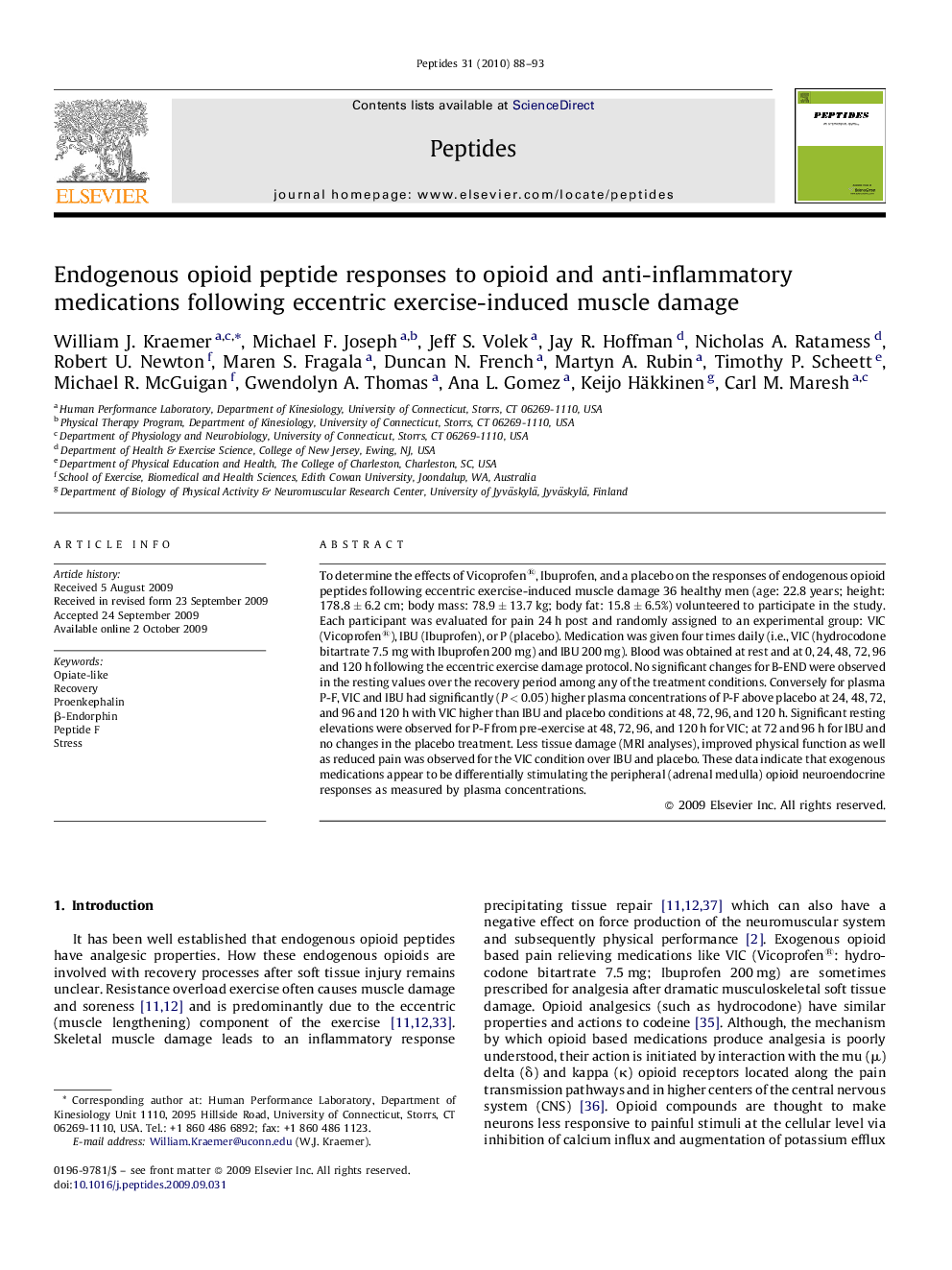| Article ID | Journal | Published Year | Pages | File Type |
|---|---|---|---|---|
| 10836007 | Peptides | 2010 | 6 Pages |
Abstract
To determine the effects of Vicoprofen®, Ibuprofen, and a placebo on the responses of endogenous opioid peptides following eccentric exercise-induced muscle damage 36 healthy men (age: 22.8 years; height: 178.8 ± 6.2 cm; body mass: 78.9 ± 13.7 kg; body fat: 15.8 ± 6.5%) volunteered to participate in the study. Each participant was evaluated for pain 24 h post and randomly assigned to an experimental group: VIC (Vicoprofen®), IBU (Ibuprofen), or P (placebo). Medication was given four times daily (i.e., VIC (hydrocodone bitartrate 7.5 mg with Ibuprofen 200 mg) and IBU 200 mg). Blood was obtained at rest and at 0, 24, 48, 72, 96 and 120 h following the eccentric exercise damage protocol. No significant changes for B-END were observed in the resting values over the recovery period among any of the treatment conditions. Conversely for plasma P-F, VIC and IBU had significantly (P < 0.05) higher plasma concentrations of P-F above placebo at 24, 48, 72, and 96 and 120 h with VIC higher than IBU and placebo conditions at 48, 72, 96, and 120 h. Significant resting elevations were observed for P-F from pre-exercise at 48, 72, 96, and 120 h for VIC; at 72 and 96 h for IBU and no changes in the placebo treatment. Less tissue damage (MRI analyses), improved physical function as well as reduced pain was observed for the VIC condition over IBU and placebo. These data indicate that exogenous medications appear to be differentially stimulating the peripheral (adrenal medulla) opioid neuroendocrine responses as measured by plasma concentrations.
Related Topics
Life Sciences
Biochemistry, Genetics and Molecular Biology
Biochemistry
Authors
William J. Kraemer, Michael F. Joseph, Jeff S. Volek, Jay R. Hoffman, Nicholas A. Ratamess, Robert U. Newton, Maren S. Fragala, Duncan N. French, Martyn A. Rubin, Timothy P. Scheett, Michael R. McGuigan, Gwendolyn A. Thomas, Ana L. Gomez,
